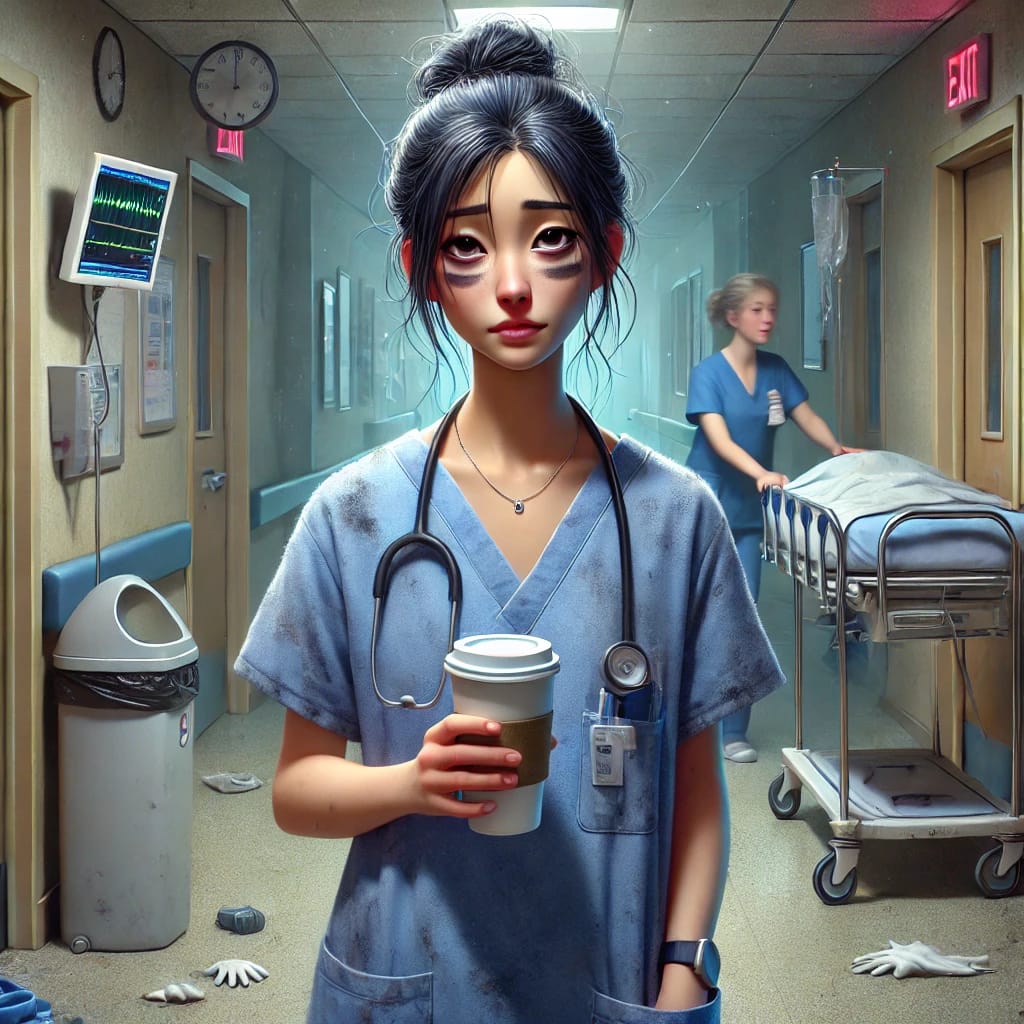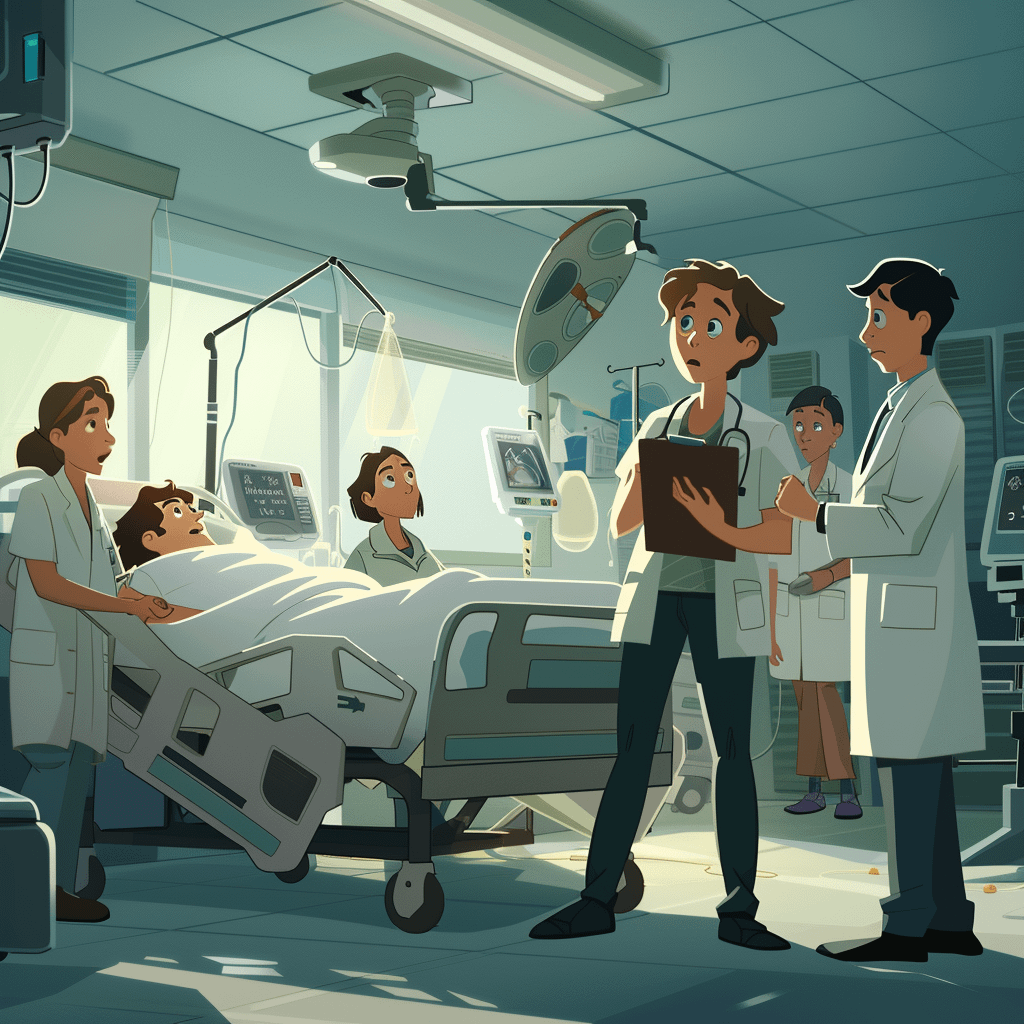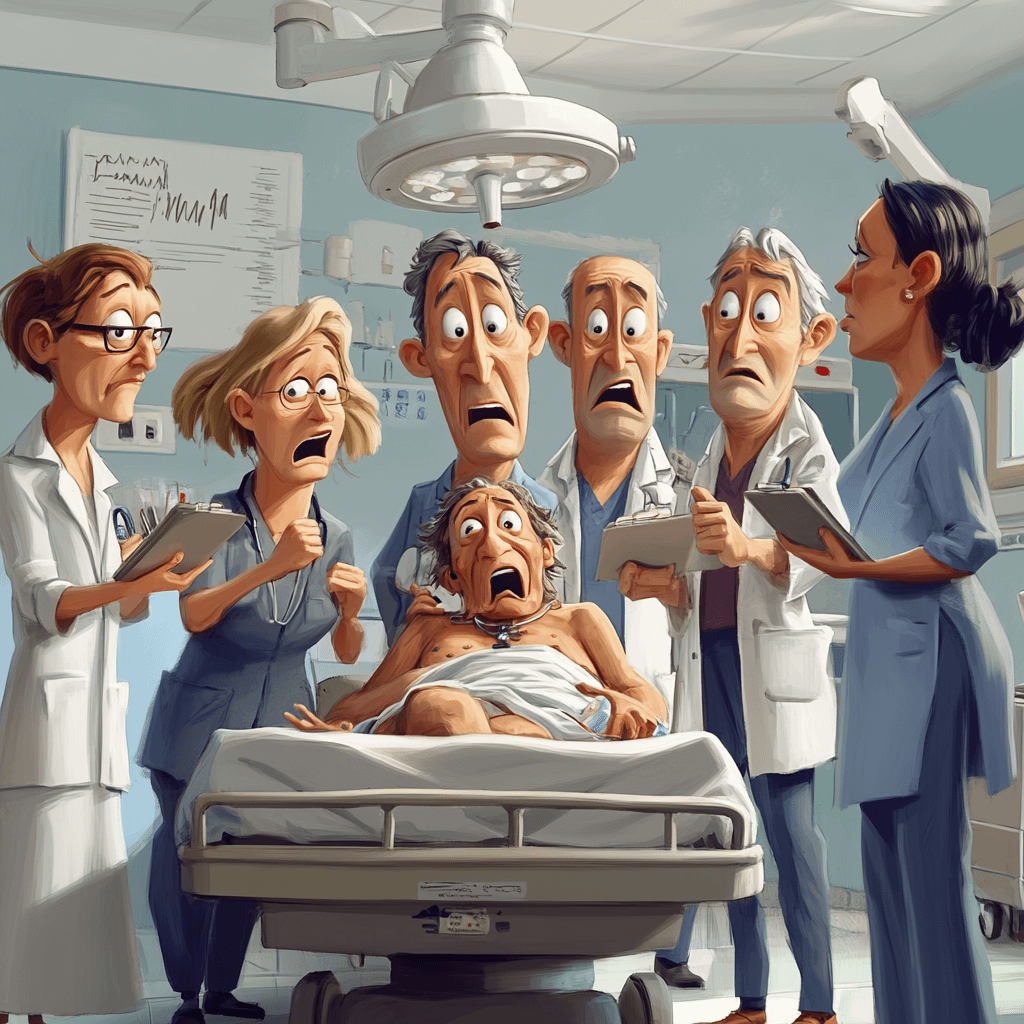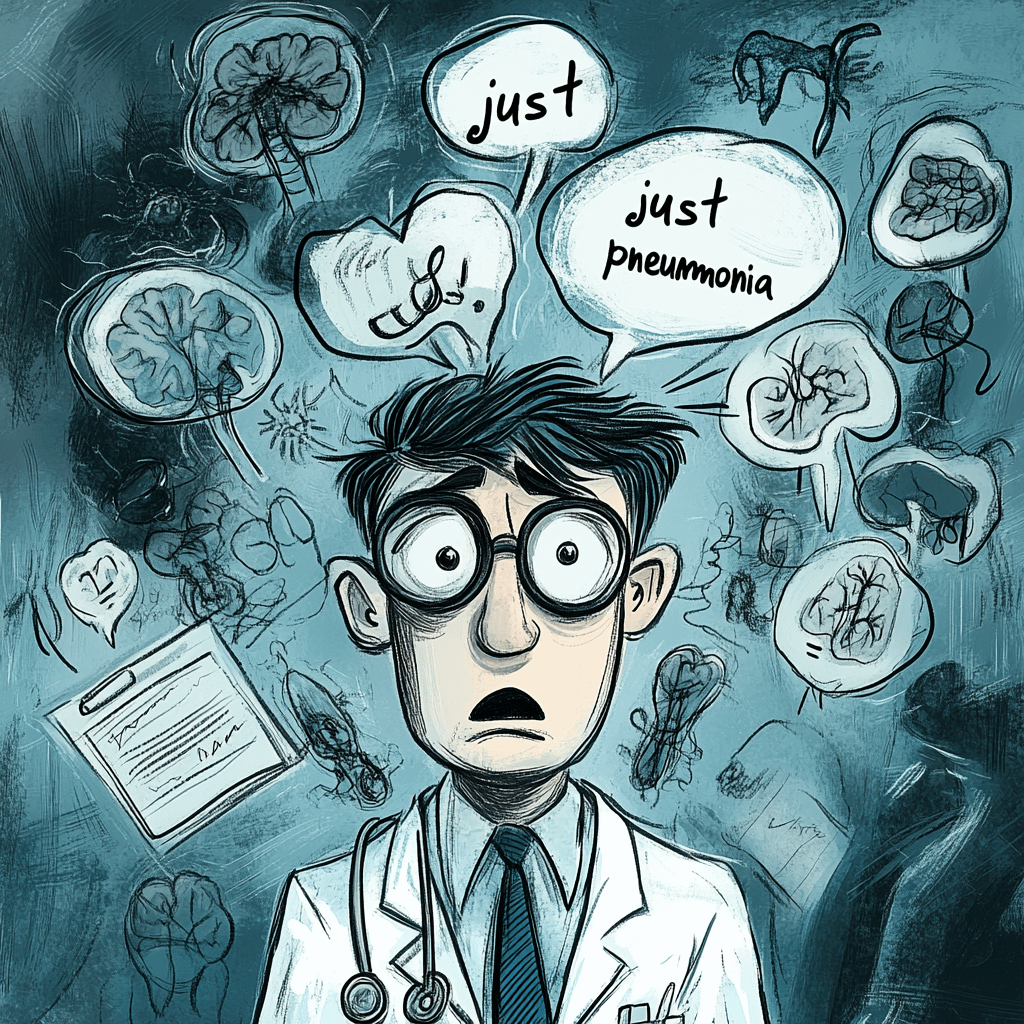Disclaimer: Everything in this article is entirely fictional, satirical, and written for entertainment purposes only. While many of us in medicine have fantasized about charting “Selective Hearing Syndrome” or “Code Brown PTSD,” these conditions are not real, nor should they be used in any clinical documentation. Unless, of course, you’re charting in your dreams.
Ever wanted to chart “Chronic Can’t-Even-itis”?
Us too. And here’s a list of names that might not exist—yet—but probably should.
Welcome to the unofficial chart of funny medical condition names—a place where sarcasm scrubs in, and dark humor gets the last laugh. Whether you’re a charting doctor, a nurse battling acronyms, or someone just trying to survive another shift surrounded by common chronic medical conditions that oddly resemble personality traits, this one’s for you.
We’re diving deep into the fictional diagnoses we wish existed—because sometimes, charting for nurses or deciphering a medical conditions list just isn’t enough to capture the sheer absurdity of what we see. Think “Per My Last Email Syndrome” or “Terminal Noncompliance Fatigue.” They’re not in the textbooks, but they’ve been in every ward, clinic, and cursed hallway since the dawn of charting.
This isn’t your standard rundown of medical conditions abbreviations or clinical documentation best practices. Nope. This is the shadow chart—the one we all keep in our heads when the shift has gone on too long and the coffee IV isn’t kicking in fast enough.

Table of Contents
Hilarious Medical Condition Names You’ll Never See in a Medical Redord (But We’ve All Witnessed)
We asked ourselves: what if the hospital record let us write what we really meant?
What if, hidden among all the real medical conditions lists and chronic patient diagnoses, we could slip in a few… truths?
Whether you’re charting as a doctor, drowning in nursing documentation, or just praying no one says “can I have water?” mid-sedation, these are the funny medical condition names that don’t exist—but absolutely should.
And no, ICD-10 doesn’t have codes for these. Yet.
Rounding-Induced Amnesia (RIA)
Not yet in textbooks. Definitely in your daily life.
Rounding-Induced Amnesia (RIA) is a devastatingly common fictional disorder affecting junior doctors, medical students, and occasionally consultants who just got caught off guard. It strikes without warning, usually during morning rounds, particularly when the boss suddenly asks, “Tell me about this patient.”
Symptoms include:
– Complete memory wipe of the patient you’ve been following all week
– Loss of ability to pronounce any medication name correctly
– Sweating through scrubs while staring at the vital signs like they’re ancient code
This condition is especially prevalent in large hospitals where charting doctors must memorize half the medical conditions list before 8:00 AM and pretend they slept. RIA is worsened by consultants with a glare strong enough to rupture organs and by patients who suddenly decide to ask philosophical questions mid-presentation.
Diagnosis:
Based on sudden verbal paralysis, excessive use of the phrase “Uhm,” and aggressively scrolling through the EMR while praying for divine intervention.
Prognosis:
Poor—until coffee is administered or rounds mercifully move to the next bed.
Treatment:
Eye contact avoidance, backup printed notes, and a discreet WhatsApp group with your co-interns who remind you what the patient actually came in for.

Bureaucratitis Bureaucratica
A fictional entry in the growing global list of funny medical condition names.
Among the most soul-sapping funny medical condition names ever whispered between exhausted nurses and sarcastic residents is Bureaucratitis Bureaucratica—a fabricated but widely felt diagnosis affecting every hospital on Earth.
This satirical disorder belongs at the top of any unofficial medical conditions list for healthcare professionals who’ve lost hours to mandatory training modules, digital signature loops, or the seventh version of the same referral form.
Symptoms include:
– Repetitive form-filling fatigue
– Involuntary sighing while updating the EMR
– Hallucinations triggered by unreadable medical conditions abbreviations
– Rage at policies that change monthly but still require 47 clicks to confirm “patient alert”
Whether you’re a charting doctor triple-documenting bowel movements or a nurse navigating eight tabs just to record blood pressure, Bureaucratitis Bureaucratica spares no specialty. It masquerades as a common chronic medical condition but presents with unique, documentation-induced despair.
Medical conditions examples include:
Delayed discharge due to “missing checkbox syndrome”
“Sign here, here, here, and here… and again” psychosis
Compliance module deja vu
Treatment:
Passive-aggressive email replies
Backup copies of forms you shouldn’t need
Clinical rituals like slamming drawers gently enough to seem professional
Prognosis:
Terminal if HR finds your meme folder
Otherwise chronic, especially during accreditation season
Add this one to your internal charting for nurses diagnosis list—you won’t find it in textbooks, but you’ll find it in every shift.
Hypercaffeinatia Tremendosa (Formerly Known as Caffeinated Clinical Delirium)
A front-runner among funny medical condition names for professionals who think espresso counts as sleep.
Hypercaffeinatia Tremendosa is the unofficial but universally accepted condition suffered by any charting doctor or night shift nurse who’s running on 4 shots of espresso, 2 hours of broken sleep, and a dream they can’t quite remember.
It’s one of the most global funny medical condition names, found wherever healthcare exists and break rooms have bad coffee. It starts slow—one cup, maybe two—but by cup four, you’re vibrating through handover while mislabeling labs and aggressively highlighting the wrong patient name.
Symptoms include:
– Charting at 130 WPM with no idea what you just wrote
– Uncontrollable sarcasm at morning report
– Performing ward rounds while physically present and mentally orbiting Jupiter
Charting for nurses affected by this condition often includes unusual abbreviations like “VSS, but spiritually unwell.” Meanwhile, medical conditions abbreviations blur into latte art.
Medical conditions list insight:
May co-occur with Pre-Round Paralysis
Often precedes Keyboard Triage Syndrome
Exacerbated by “surprise staff meetings” before 8 AM
Treatment:
Denial. More caffeine. And if that fails, switching to decaf and pretending you’re above it all.
Prognosis:
Unstable. But you’re still more functional than the consultant who came in 90 minutes late and took your last croissant.
Consultosis Multiplex
A crowd favorite on the underground list of funny medical condition names.
Consultosis Multiplex is a relentless, recursive condition where every specialist involved in a patient’s care recommends a different specialty to take responsibility. It’s not fatal to the patient—but it might be to the care team’s will to live.
A true gem in the realm of funny medical condition names, this fictional diagnosis appears most often on multi-morbidity cases where the medical conditions list reads longer than the Bible, and yet no one wants to touch the actual issue.
Symptoms include:
– “Not our department” written in six different handwriting styles
– 17 pending referrals and still no plan
– Pager responses that say “Please consult ID first” when it’s clearly a surgical abscess
Charting doctor may note:
“Awaiting consult from consult that was supposed to consult the consult.”
Medical conditions examples associated with Consultosis Multiplex include:
“Neuro says Cardio, Cardio says ID, ID says ‘Not us’”
Delirium by bureaucracy
The classic “Let’s discuss in the MDT” delay tactic
Charting for nurses often ends with:
“Still waiting for someone to own this patient.”
Treatment:
The attending taking a deep breath, rolling up their sleeves, and making an actual decision
In extreme cases: calling switchboard and threatening to walk upstairs yourself
Prognosis:
Poor. Patient is still in bed. Everyone else has emotionally checked out.

Chronic Can’t-Even-itis
A modern plague in the evolving compendium of funny medical condition names.
Chronicus Nolite Me Tangere is a disturbingly common diagnosis found in nurses, interns, residents, and any charting doctor scheduled for more than two shifts in a row. It’s not in the medical conditions list—but it lives rent-free in every break room across every continent.
This condition emerges midway through your third night shift, typically after you’ve answered your fiftieth “just one more thing” request, restocked a crash cart alone, and tried to write coherent medical conditions abbreviations while hallucinating the scent of pizza that isn’t there.
Symptoms include:
– Slow blinking
– Spontaneous whispering of, “I can’t even” while charting vitals
– Extreme avoidance of any interaction that starts with “Can you just…”
Charting for nurses frequently includes passive-aggressive gems like:
“Patient ambulating well. Staff… emotionally ambulatory.”
Medical conditions examples often confused with this: burnout, apathy, existential despair—but this one is funnier, and somehow deeper.
Treatment:
A real lunch break (just kidding)
That one colleague who hands you coffee without talking
Audible sighs that double as emotional triage
Prognosis:
Highly contagious.
Mostly self-limiting after a weekend off—but don’t count on one.
Flashbackus Diarrheae Extremis (Common Name: Chronic Code Brown Flashbacks)
A condition no one talks about—but everyone smells.
Among the most psychologically scarring funny medical condition names, Flashbackus Diarrheae Extremis ranks at the top. It is a fictional yet spiritually accurate diagnosis found in medical professionals exposed to gastrointestinal disaster zones, usually ungloved, underprepared, and far too close.
This condition isn’t listed under common chronic medical conditions—because no one dares to document it.
But it’s real. You know it. We know it.
Symptoms include:
– Sudden panic when hearing the word “explosive”
– Nausea when entering Room 4 again
– Shaking hands while folding hospital gowns as a trauma response
Charting for nurses:
“Extensive cleanup. Details redacted for morale preservation.”
Charting doctor response:
“Will assess from doorway.”
Medical conditions list for the patient:
– C. diff, laxative overload, or just really bad life choices.
Medical conditions examples like this include:
– “Uncontained GI event”
– “Diarrhea x infinity”
– “Started as stool, became legend”
Treatment:
Mental cleansing with industrial soap and dark humor
Swearing in Latin
Permanent avoidance of chili day in the cafeteria
Prognosis:
Permanent olfactory trauma
Sudden flashbacks in linen closets and elevator shafts
Dolorometria Illusionata (Common Name: Pain Scale Delusional Disorder)
A fictional disorder that every nurse, medic, and charting doctor has diagnosed—silently and without regret.
Dolorometria Illusionata is an unofficial favorite among funny medical condition names, born in ERs, triage units, and anywhere else patients are asked to rate their pain “from 0 to 10.”
It presents globally, without regard to culture or continent. While not found on any official medical conditions list, it’s as common as misplaced blood pressure cuffs and forgotten discharge summaries.
Clinical features include:
– Patient texting and laughing while declaring their pain is “11 out of 10”
– Refusal to sit down due to “excruciating pain,” yet pacing to find a better phone signal
– “Worst pain of my life” used to describe a mild hangnail or stubbed toe
– No visible distress—but an urgent need for morphine
Charting for nurses often includes polite euphemisms such as:
“Appears comfortable despite reported severity.”
“Patient ambulating to vending machine without difficulty.”
Charting doctor notes may read:
“Pain rating inconsistent with physical exam.”
Medical conditions examples misrepresented by this disorder include:
Mild tension headache
Day-three sunburn
Boredom
Medical conditions abbreviations commonly used during documentation (silently):
– FOS: Full Of Something
– WPF: Wild Pain Fabrication
– HJS: High Justification Syndrome (for IV meds)
Treatment:
Deep internal screaming
Offering paracetamol with a side of validation
Alerting security only when they start yelling about their “rights as a Scorpio”
Prognosis:
Chronic in repeat visitors
Self-resolving once Netflix buffers
If you haven’t encountered Dolorometria Illusionata at least once this week, congrats—you’re either not working… or you’ve gone fully numb.

Dismissialis Fantastica (Common Name: Delusional Discharge Planning)
A widespread fictional condition, best filed under funny medical condition names and worst-case optimism.
Diimissialis Fantastica is the inexplicably hopeful belief—most commonly held by junior staff and optimistic consultants—that a patient will actually be discharged before 17:00. Found across all continents, specialties, and especially on Fridays.
Despite not appearing on any formal medical conditions list, this condition spreads rapidly in ward rounds, discharge lounges, and the innocent minds of new interns who still believe in systems that work.
Symptoms include:
– Printing discharge summaries at 10:00 with confidence
– Uttering the phrase “You’ll be going home today!”
– Trusting that pharmacy will send meds before nightfall
Charting doctor entry:
“Awaiting final labs, consult note, transport, family pickup, and divine intervention.”
Charting for nurses might read:
“Patient remains in bed. So does everyone’s hope.”
Medical conditions examples worsened by Dimissialis Fantastica:
Waiting for imaging that’s been ‘pending’ since 8AM
“One more check from neurology”
Patient asking to leave while still on IV dopamine
Medical conditions abbreviations you wish existed:
– NED (Never Ever Discharging)
– P.E.T. (Patient Eternally There)
Treatment:
Tell the patient nothing
Bribe pharmacy with coffee
Accept defeat by 16:45
Prognosis:
Recurrent
Sometimes curable with strong consultants and assertive discharge coordinators
Fatigus Oculi Terminalis (Common Name: Terminal Eye-Rolling Fatigue)
Classified under funny medical condition names that are too real to laugh at and too accurate to ignore.
Fatigus Oculi Terminalis is a global condition seen most commonly in seasoned residents, senior nurses, and anyone overexposed to admin-speak, unnecessary consults, or patients requesting discharge because they have a “hair appointment.”
It doesn’t show up on your EMR’s medical conditions abbreviations—but trust us, it’s there, between the lines of every passive-aggressive progress note.
Symptoms include:
– Deep, involuntary eye rolls triggered by avoidable drama
– Sighs so long they qualify as respiratory assessments
– Responding to emails with the phrase “Per my last message…”
Charting doctor note may read:
“No acute changes. But emotional bandwidth critically low.”
Charting for nurses might include:
“Patient stable. Staff, uncertain.”
Common chronic medical conditions made worse by this diagnosis include:
Endless family meetings
Med students asking for “just a moment”
Patients pulling off dressings mid-rounds
Medical conditions examples that often cause flare-ups:
– “I read online…”
– “You look too young to be a doctor.”
– Any sentence that starts with, “No offense, but…”
Treatment:
Leaving the room before your face says what your mouth won’t
Gossip in the break room
Quiet cursing into your stethoscope
Prognosis:
Irreversible. But weirdly satisfying.
Committophobia Diagnostica
A proud member of the underground elite: funny medical condition names no one dares chart—but everyone has diagnosed.
Committophobia Diagnostica is the fictional but widely understood disorder characterized by the complete inability to make a definitive medical decision. It’s seen in charting doctors across all specialties, particularly in those new to the job or those burned one too many times by “just pneumonia” turning into full-blown multi-organ collapse.
This affliction is universal—crossing borders, specialties, and levels of seniority. Found lurking between phrases like “possible sepsis? maybe?” and “consider cardiology consult if persists”, it turns even the most basic medical conditions examples into unsolvable mysteries.
Symptoms include:
– Ordering “just a few more labs” after the full panel is already back
– Referring to dermatology for anything red
– Writing differential diagnoses longer than the actual patient note
Charting doctor red flags:
Frequent use of “rule out”
Ending sentences with question marks
Making decisions only after five other people have made theirs
Charting for nurses often reflects the fallout:
“Awaiting plan. Again.”
“Patient stable. Care plan: unclear.”
Medical conditions list usually includes:
– Hypertension
– Elevated troponin
– Diagnostic paralysis
Medical conditions abbreviations invented in its wake:
– TBD (To Be Diagnosed)
– TMI (Too Many Investigations)
– LOL (Lots Of Labs)
Treatment:
A firm senior
Coffee
Threats of weekend coverage
Prognosis:
Improves with confidence
Worsens during audits
Becomes contagious in teaching hospitals

Between scribbling funny medical condition names and trying to remember if I ate lunch, I started using this small meditation chime at home. Just one strike—it cuts through the noise in my head better than any deep breath ever did.
If reading about funny medical condition names makes you laugh through the exhaustion, don’t miss this unapologetically real take on doctor fatigue—because sometimes the sleepiest stories are also the truest.
Final Diagnosis: Humor Still Beats Burnout
So there you have it—our unofficial, totally unrecognized, yet instantly relatable funny medical condition names that every healthcare professional has secretly diagnosed in their head (and maybe whispered during lunch).
None of these conditions will ever make it into the ICD, the EMR, or your med school syllabus. But they exist. In break rooms, in hallway rants, in that tight smile you give when someone says, “You don’t look tired.” And let’s be honest—they’re half the reason we haven’t completely lost it.
Because beneath the snark and sarcasm is something real:
You care. A lot. Probably too much.
So you laugh just hard enough not to cry, or throw a stethoscope, or Google your own symptoms at 2 a.m.
Here’s to the drama, the chaos, the caffeine—and to naming the madness when no one else will.
Now, go chart something deeply professional… and maybe send this to someone who needs a laugh more than another protocol.
